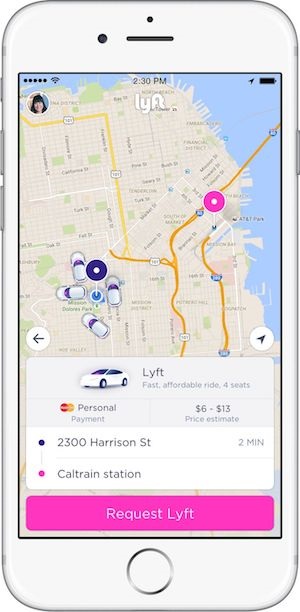 They both transport you from A to B, they take roughly
the same time
and have a similar cost. And yet, when many of us travel these days, we
use Uber/Lyft instead of taxis; across the world, Uber/Lyft driving is
a thriving “occupation,” and the value of New York taxi medallions has
crashed from $1M to $200K in a blink of an eye.
They both transport you from A to B, they take roughly
the same time
and have a similar cost. And yet, when many of us travel these days, we
use Uber/Lyft instead of taxis; across the world, Uber/Lyft driving is
a thriving “occupation,” and the value of New York taxi medallions has
crashed from $1M to $200K in a blink of an eye.The answer is obvious; it’s the App on our phones.
These Apps presents you with specific information, in particular ways, at the right times, all relevant to the thing you want to accomplish, getting from A to B.
When I need a car to go somewhere, I can fire up the App and see how long I’ll need to wait and the locations of vehicles around me. Once I tell the App my destination and car preference, the cost of the trip is revealed. If I decide to request the car, I am “entertained” through the process of “finding” a vehicle, then bingo, I know the driver’s name, rating, and the type and color of car that’s coming for me! Then I see the car inching its way to me on a map; I can speak to the driver if I want, and the app beeps when the car arrives. I am also informed when I’m likely to get to my destination. When I finally get there, I get out of the car and go about my day without touching my wallet, knowing that a receipt will be in my Inbox, and the right credit card will be charged! Through each step of the way, the App is presenting what I call positive user experience.
 If you compare the above experience with taxis, it’s
obvious how
antiquated and frustrating taxis are. None of the positive user
interactions are is seen with taxis. My guess is that in many cases,
the time it takes for the above on the App is not much different than
the time find a taxi! The App uses data to turn frustrated time into
positive interactions and time you can use, and a better experience all
around. That’s value creation!
If you compare the above experience with taxis, it’s
obvious how
antiquated and frustrating taxis are. None of the positive user
interactions are is seen with taxis. My guess is that in many cases,
the time it takes for the above on the App is not much different than
the time find a taxi! The App uses data to turn frustrated time into
positive interactions and time you can use, and a better experience all
around. That’s value creation!This is the magic of transparency. The above is an example of a service where data is used and presented as necessary to the user, at the appropriate times when needed. Interestingly, a similar number of taxis were probably around you as Uber/Lyft vehicles, but their status is not being captured or used digitally, in other words, they were invisible to you until they drive by you. This is what is meant by “transparency,” making invisible things visible.
So, how do we bring this level of positive user interactions to buildings?
The quick answer is Data, but we need to look back at the App once more to understand the types of data required, the importance of their relationship and presentation to the user. At first, your GPS is vital, then the collective GPS of the right type of cars near you, and for each, how long they would take to get to you based on current traffic conditions. The App may do other things like checking your account, compare your history with the drivers to filter our 3-star scores and below, and charge you based on the current service usage. All this to display just the first screen of the App! Similar algorithms exist with subsequent steps of the trip.
 As the above unfolds, in the data
center of Uber/Lyft, a model is
created to represent your trip. The model is built using a combination
of static context information (account info, driver picture, license
plate, etc.), and real-time data derived from a variety of sensors on
multiple smartphones (GPS, traffic conditions, etc.), all on different
phone brands, across multiple service providers and device OS’s.
Combined this with a defined process, pricing and objectives, the
“trip” is executed across a network of devices that is all seamless to
the user! It’s quite incredible actually.
As the above unfolds, in the data
center of Uber/Lyft, a model is
created to represent your trip. The model is built using a combination
of static context information (account info, driver picture, license
plate, etc.), and real-time data derived from a variety of sensors on
multiple smartphones (GPS, traffic conditions, etc.), all on different
phone brands, across multiple service providers and device OS’s.
Combined this with a defined process, pricing and objectives, the
“trip” is executed across a network of devices that is all seamless to
the user! It’s quite incredible actually.For buildings, instead of cars, city roads, and people, we have air, pipes/ducts, and physical spaces. To achieve a similar level of transparency, we need a way to model the building. In the New Deal, this is called the Digital Twin. Just like the App example, the Digital Twin will need to know static information (physical floorplan, pipe diagrams, other building attributes, etc.), and real-time data (temperature, humidity, status, lux levels, CO2, etc.). Finally, the Digital Twin will need to know the relationships, relevant processes, objectives, and parameters (the type of building, energy targets, the sequence of operations, etc.).